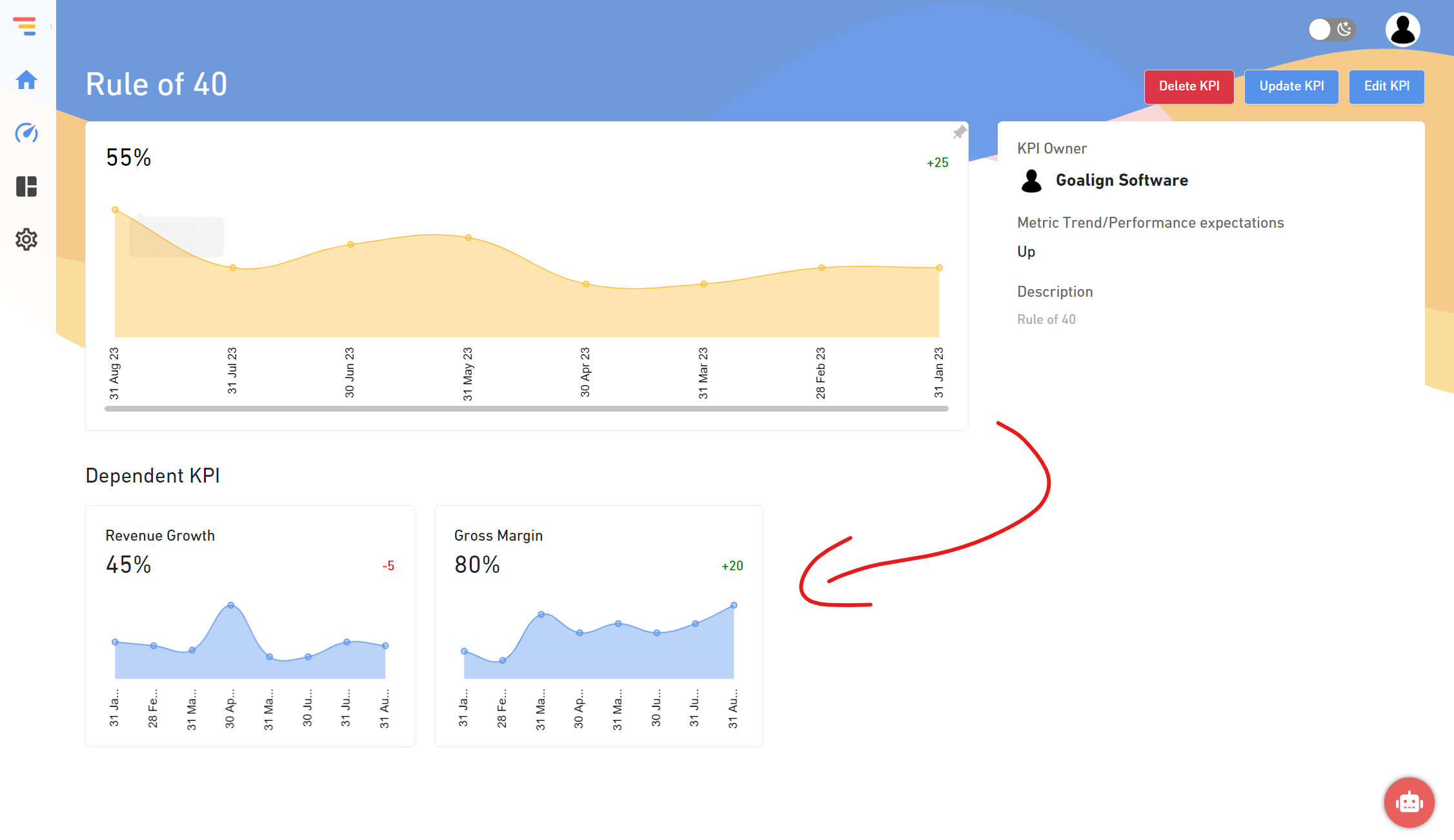What Are OKRs in Sales?
OKR is an acronym that stands for Objectives and Key Results. OKRs are a goal-setting framework that assists teams in developing and achieving their objectives. OKRs are, in fact, quite similar to SMART objectives. They advise you to be explicit about what you want, to set a timetable, and synchronize your goals. The distinction between the two is that OKRs include a step-by-step strategy for achieving accomplishment.
Guidelines for Creating Effective Sales Objectives (OKRs)
1. Increase User Base
Customers are more knowledgeable and research-savvy than ever before. The key to earning the confidence and expanding your user base is to present thorough information about your products and services to potential consumers. Writing an OKR for this objective will guarantee enough time, effort, and resources to achieve this significant and influential Objective.
2. Establish Strategic Alliances and Channels
Leaders must regard their network of other firms as a significant component of the sales department. Allying your company with other firms that have similar target audiences is a great strategy that may benefit both sides of the alliance. Dedicating an OKR to assist create these relationships is a terrific idea for any business looking to expand its network and flourish.
3. Boost Inbound Demo Success
A good sales department guarantees that their customers are confident in their product selection. You may focus an OKR on boosting demo success to help reinforce this confidence and persuade clients to choose your product over another company.
4. Strengthen Pre-Sales Process
The first stage in completing a transaction is to ensure that clients are introduced to your organization positively and have all of the information they need to feel comfortable purchasing your product or service. A sales team may improve their clients’ experiences and affect company growth by building an OKR to boost the presales process.
5. Develop Customer-Facing Content to Assist Sales/Support
Your sales staff may generate customer-facing content to grab client attention and show complete usage of your product or service. While this objective necessitates work and talent, it is a highly influential goal that, when realized, may have a significant influence on your company’s sales and customer experience.
6. Strengthen Sales Team
While every department should have an ongoing aim for progress and team strength, establishing an OKR provides intentionality and attention to this goal and time and work to ensure that it occurs. While this goal may appear ethereal, solid and precise key outcomes may turn it into a reality, resulting in a better sales team and a more vital organization.
7. Create an Active Resellers Channel
Solidifying connections with channel partners, anticipating purchases, and maintaining ongoing communication with key clients are vital aspects of a sales department’s responsibilities. Creating an OKR that targets this aim is critical for a sales department’s and a company’s success.
8. Increase Customer Engagement
Finding techniques to keep clients engaged and responsive is critical to completing a successful transaction and developing customer relationships. Consumers that are more engaged with your brand spend more time with it and are more likely to be a repeat or long-term customers. This high-effort, the high-impact goal is achievable with well-developed and significant key results.
9. Create a Stable Demo Pipeline
A sales department must adapt and grow as the company grows and develops. Using OKRs to create precise goals that assist your team manage their priorities at times like this is a terrific approach to focusing effort and positive change.
10. Increase Annual Recurring Revenue by ten percent.
While raising revenue is probably constantly on the list of goals for a sales department, setting a particular OKR to target a specific facet of this goal, such as increasing yearly recurring revenue, may assist focus effort and coordinate your team. Creating clear, measurable, and time-bound vital results is a beautiful method to boost motivation and development within your team while also benefiting the overall organization.
Sales OKR Examples
A. Sales team OKRs
OKRs for sales teams are goals that your sales team may work collaboratively to attain. OKRs can contain objectives such as accelerating specific sales processes or assembling the ideal sales team, such as these two:
Returning to the Sales OKR examples:
1. Objective: Increase our sales department’s performance by 15%.
Key Results:
- Maintain a $250K sales funnel of quality prospects each quarter.
- Increase our closing percentage from 15% to 30%.
- To evaluate our performance, implement a balanced scorecard.
- Increase the number of scheduled calls per sales rep from two to seven each week.
2. Objective: Reduce our sales cycle from 8 to 6 months by the beginning of the third quarter.
Key Results:
- Cut the time from the initial call to the demo by 40%.
- Reduce the time it takes from the demo phase to the closing phase by 35%.
- Implementing a new sales training program will help us improve our sales process.
3. Objective: Increase the efficiency of our sales crew.
Key Results:
- Conduct monthly training sessions at each step of the client lifecycle.
- Increase your conversion rate from 10% to 30%.
- Our sales team’s efficiency has received excellent comments from 90% of our consumers.
B. Revenue management OKRs.
Revenue administration OKRs assist you in keeping your eyes on the prize. That’s correct! These objectives are designed to bring you more money:
4. Objective: Increase yearly recurring income by 50% by the third quarter.
Key Results:
- Achieve $150k in monthly recurring income.
- Sales should be increased by 15% to 40%.
- By the end of the second quarter, you should have a new client acquisition procedure in place.
- Reduce churn rates to less than three months.
5. Objective: By the fourth quarter, achieve record revenues while boosting profitability.
Key Results:
- Earn $75,000 in quarterly revenue.
- This quarter, we will expand our sales initiatives into two more nations.
- Increase the gross profit margin from 17% to 45%.
6. Objective: Increase the size of our sales funnels by 45 percent by the fourth quarter.
Key Results:
- Increase the number of salespeople by 20%.
- Every day, you will receive 40 lead conversions.
Reduce the number of leads lost by 20%.
C. OKRs for Product Marketing.
You can’t sell anything if no one knows about it. It’s all about coming up with eye-catching ideas for promotions, offers, and marketing campaigns:
7. Objective: Create fresh product marketing material before the end of the second quarter.
Key Results:
- Request that the marketing team create 15 promotional posts.
- Obtain ten good evaluations for our product.
- Increase the amount of product demonstration videos from seven to twenty.
8. Objective: Reopen the corporate blog by the end of the third quarter.
Key Results:
- Write and publish two blog posts every week.
- Increase the number of subscribers to your blog from 2500 to 5000.
- We need to increase our Followers on Facebook from 900 to 3000.
Conclusion:
Sales OKRs assist you in setting aggressive sales objectives and mapping out the methods to achieve them. However, having a list of efficient sales OKRs isn’t enough to succeed. It would be best if you continually worked for those OKRs. You’re in luck since you can rely on a terrific OKR tracking solution like Goalign.io






